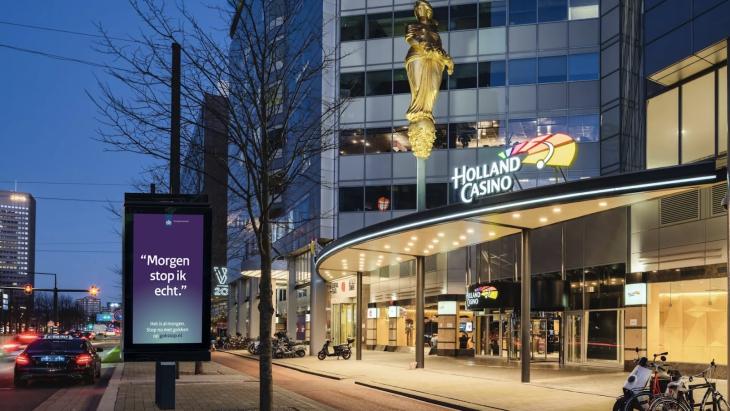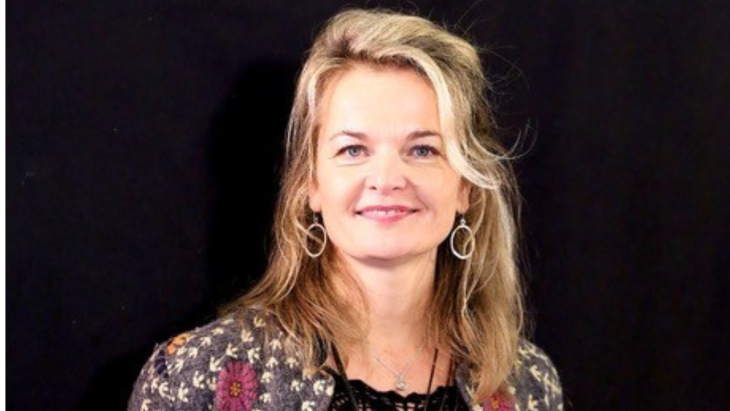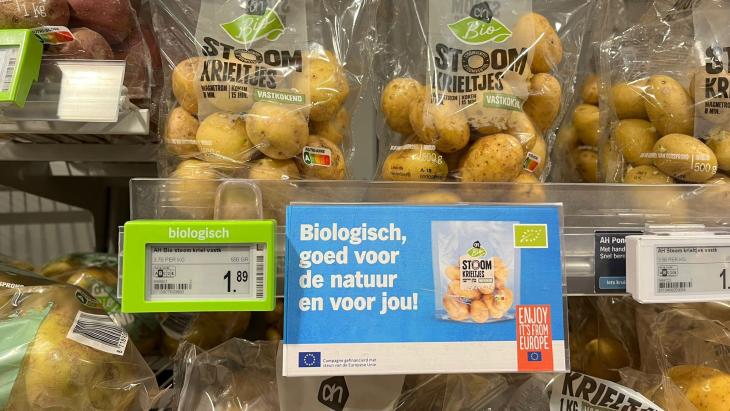door Christian Muche en Frank Schneider
The digiconomy with all of its dynamism and huge potential is like a twisted magic cube — a Rubik’s Cube. The task initially seems complex and almost insoluble, but the challenge can be solved incredibly fast if you have the right strategy. Experienced “speed cubers” can generally solve the cube puzzle in less than a minute. However, all human records are now easily outdone by technological systems such as the robot CubeStormer 2, which solves the puzzle in an amazingly short time of 5.27 seconds. Although technology can greatly shorten the time needed to achieve success, you also need a plan of how to reach your goal. There still needs to be somebody to tell the machine what it’s supposed to do. In addition, there isn’t just a single possible solution, but many. In the cube scene, the method used to solve the puzzle from any starting position with the least number of moves is called “God’s algorithm”, which is a kind of super algorithm.
dmexco 2015 will attempt to create the crucial bridges for the perfect solution and enable every company to take a big step toward the decipherment of its very own super algorithm for the digiconomy.
Creating a digiconomy algorithm in five steps
An algorithm is by definition a systematic, logical rule or procedure for solving a particular problem. Under the motto “Bridging Worlds”, dmexco will describe precisely this method of reaching a solution. The chief characteristic of the digiconomy is that everyone is networked with everyone else. dmexco will close any gaps (be they physical, cultural, social or interdisciplinary) that might still exist and also create the essential connections. As a result, it will serve as the central nexus of the “digiconomy”.
Step 1: Connecting the old and new economies
Until recently, the proponents of the new economy assumed that the former axioms of the capitalist economy would lose their validity. They thought that physical work processes and sales channels would be largely superseded by digital ones. Airbnb, for example, makes millions in profits even though it doesn’t own a single hotel. However, the comprehensive digitization of society is increasingly blurring the sharp distinction between the old and new economies as separate business sectors. There are many examples of this: Google will soon manufacture vehicles, while automakers also produce apps. Nestlé, Volkswagen, and many other companies operate labs in Silicon Valley. Time-honored fashion labels are becoming involved in e-commerce. Purely online players such as Zalando are opening branches in big cities. There are also strong drivers in the so-called old economy that are every bit as powerful as the allegedly “new” economy. Both sides will be able to benefit from knowledge transfer at dmexco, as the lines are blurred.
Step 2: Connecting the real and virtual worlds
In the future, business success will largely depend on whether companies can connect real and virtual, digital and analogue worlds with one another and create bridges to tomorrow’s consumers. A McKinsey study forecasts that the Internet of Things will generate $11 trillion of added value only ten years from now. McKinsey estimates that the healthcare sector alone has a potential of $1.6 trillion from the monitoring of individuals’ health-related data.
Successful marketing is already data-driven in many cases today, and the Internet of Things will cause the amount of marketing-relevant data to increase exponentially. In the B2C sector, usage data is enabling companies to better understand their customers so that they can address them more selectively. As a result of this data, marketers don’t “just” find out what products a customer buys, but also how often and when these products are actually used, etc. Moreover, networked products such as smartwatches are not only useful for collecting data, they also create new touchpoints for marketing communication. At dmexco, manufacturers and agencies will present their offers, insights, and strategies — and thus more or less the marketing consequences of the technological revolution.
Step 3: Connecting marketing and technology experts
For companies, the biggest risk on the road to the digiconomy is the unwillingness to invest and innovate, combined with a stubborn adherence to established processes and models as well as excessively long decision-making paths or hierarchy-related problems.
Digitization doesn’t automatically cause people everywhere to be replaced by machines. It does, however, lead to changes. Increased virtualization, flexibility, and customization have already had a huge impact on daily work in almost all sectors of the economy. The virtualization of work content through cloud computing is making fixed workplaces superfluous; the increased flexibility of work platforms as a result of mobile devices and social media, for example, is breaking up familiar work structures; cross-border cloud/crowd working models are being established and companies are already organizing workflows across all time zones. dmexco will bridge this gap between theory and practice. Future-oriented visions and new ideas will be converted into concrete strategies and real-life business at dmexco. CMOs, CIOs, and CTOs will also come closer together in Cologne. The digiconomy consists of teamwork that requires the expertise of all the stakeholders. However, marketing, creativity, and technology decision-makers first have to speak the same “language” and pull together across all departments. Digitization puts great demands on cooperative, autonomous, and connected working. dmexco is perhaps the only place where experts from almost all corporate units can come together outside their “silos” and jointly find productive solutions.
Step 4: Connecting consumers and brands
The digital transformation affects everything — people, companies, business models, sectors, and markets. For the marketing and communications industries, it opens up completely new possibilities to get in contact with consumers. Only tiny stretches of these new paths have been trodden to date, due to the fact that several companies are still coming to terms with the transformation process and some technological developments such as individual live streaming via Periscope are just now becoming suitable for large-scale use.
dmexco stopped focusing exclusively on marketing, media, and advertising some time ago. On average, Germans spend 12 years of their lives watching TV. However, media consumption is increasingly shifting to mobile devices. Screens of all types and designations will dominate our daily lives more and more. And cars are also becoming more important from a marketing standpoint. That’s because people spend two years and six months of their lives in automobiles and connected cars are causing media use to play an increasingly important role there, as BMW will impressively demonstrate here at dmexco. The smart connection of offline and online activities is also the recipe for success in the area of commerce. A practical demonstration of this will be provided at dmexco by the digital agency Razorfish and its innovative store environment “Razorshop.”
Step 5: Connecting cultures and continents
Most revolutionary innovations come from countries that provide optimal conditions for entrepreneurs. Brilliant ideas and disruptive business models are often developed by individuals rather than market-leading companies. Jeff Bezos revolutionized the electronic purchasing market with Amazon, while Uber is currently making globally established and nationally “anchored” transportation companies superfluous. As a result, such developments can potentially transform entire markets. Development cycles are brutally fast in the digiconomy. The people who are responsible for marketing, media, creations, and technologies have to examine trends, theories, and future scenarios all over the world and respond to them. The key here is cross-border collaboration. New York, London, Mumbai, Singapore — the dmexco team is represented all over the world through satellite events. Our many trips and innumerable discussions with the international leaders of the digital industry enable us to regularly measure the DNA of the new digiconomy. As an international information broker and central networking platform, dmexco aims to provide visitors and companies with the best possible support as they navigate the digital transformation and successfully exploit the digiconomy’s potential. Besides brands from Europe, the Americas, and Asia, companies from Africa will be represented at dmexco for the first time in 2015.
dmexco 2015 — the bridge builder for the digiconomy
The companies with the most physical capital are no longer automatically successful in the digiconomy. The value created by the digital economy is based on a wide variety of mindsets — models that are often disruptive and that generate amazing new economic potential. dmexco is the place where this new economy becomes visible in an exposition and a conference, a place where trends become recognizable and visitors from all over the world receive helpful orientation for their digital business models.
With our motto, we are calling on all market players to network at dmexco and to learn from one another, understand the change process, and exploit the various opportunities and potential! In addition to promoting top-level discussions, we want to bring together knowledge, visions, innovations, best practices, leading minds, companies, and budgets. dmexco is the key bridge for usefully connecting more and more sectors of the economy and successfully assisting them as they move into the digiconomy era.
By the way, the current Rubik Cube’s record was set just a few months ago by the U.S. teenager Collin Burns. During a high school competition in Pennsylvania, Burns solved the magic cube riddle in the unbelievably short time of only 5.25 seconds. That makes him the Usain Bolt of the Rubik‘s Cube. Much can therefore be achieved if you have the right measures and a super algorithm — this is also, and especially, the case at dmexco.
Christian Muche en Frank Schneider vormen samen de Board of Directors van Dmexco, het grote marketing technology en marketing dat 16 en 17 september plaatsvindt in Keulen.







Plaats als eerste een reactie
Ook een reactie plaatsen? Word lid van Adformatie!